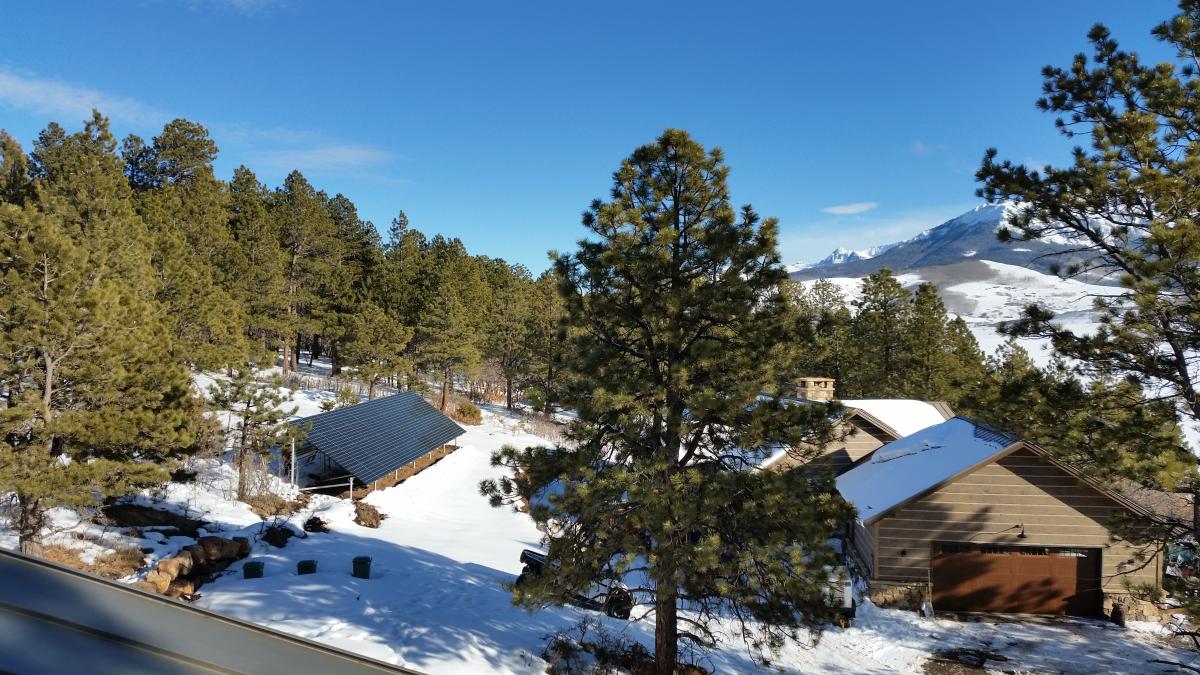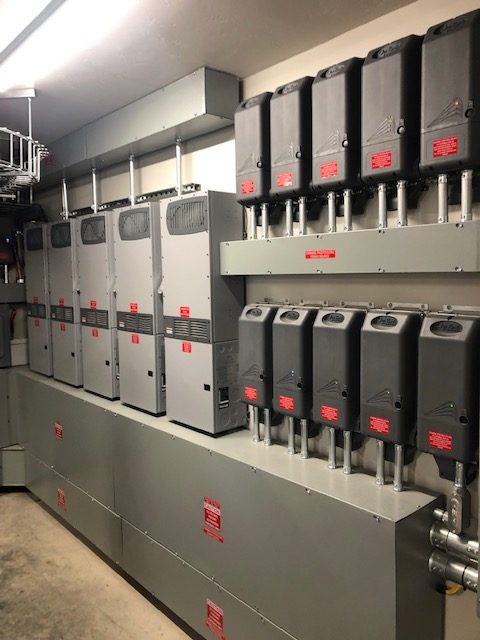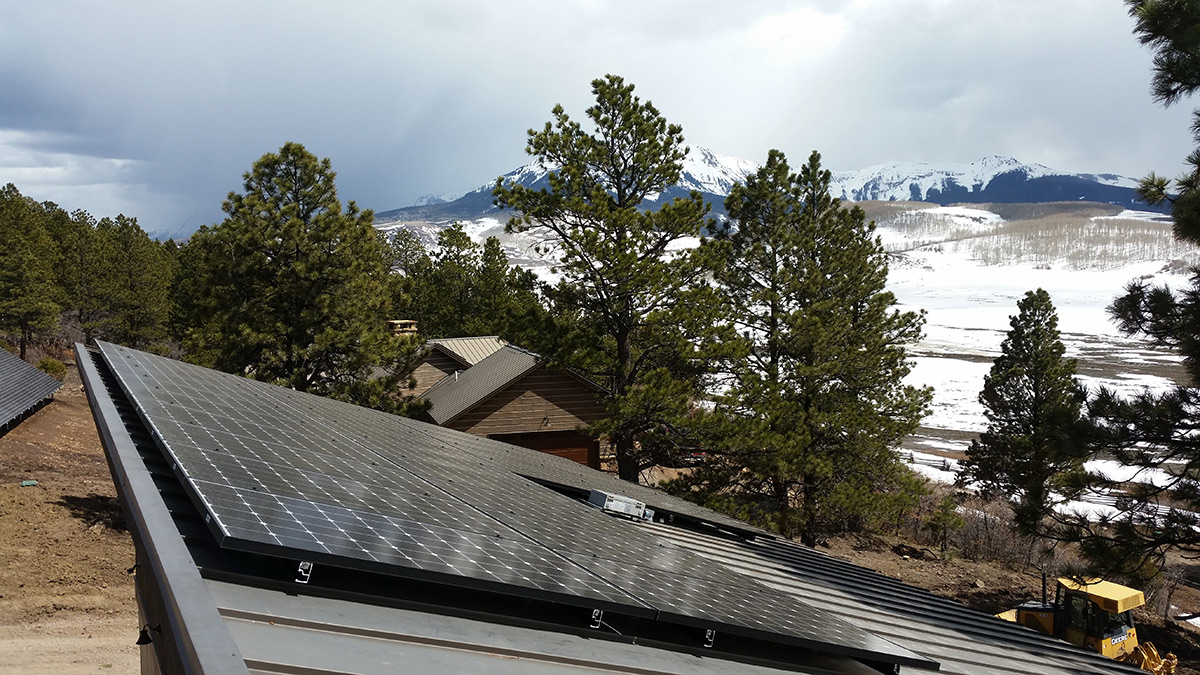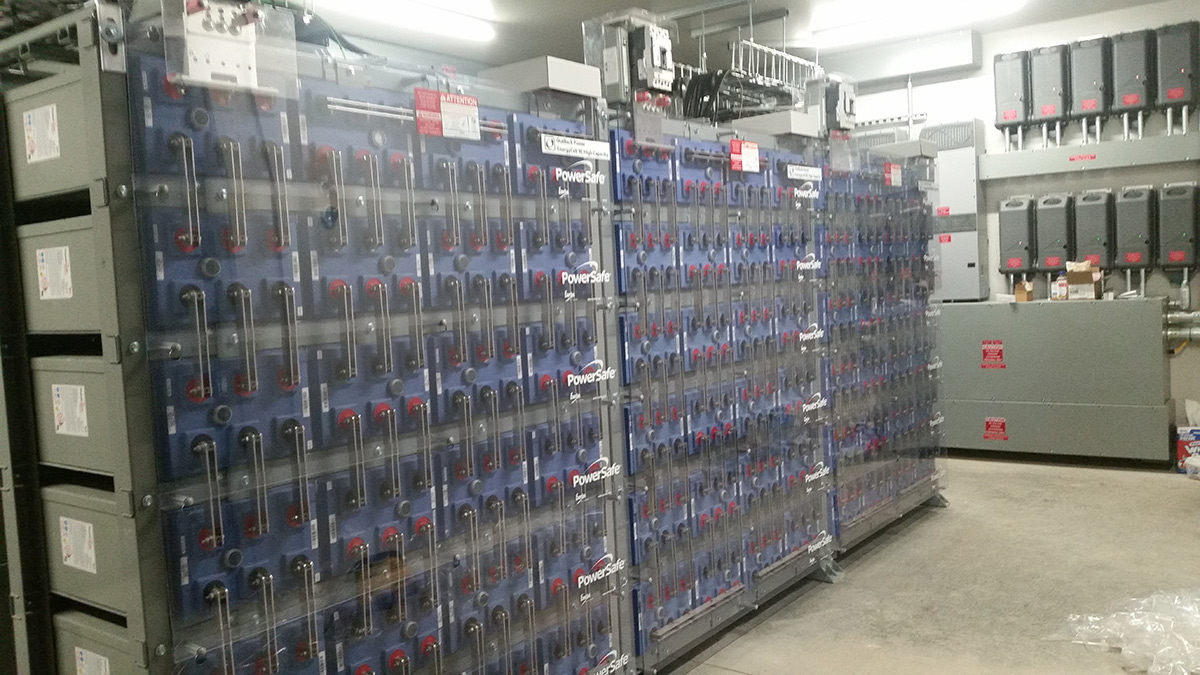Tucked into the Colorado wilderness and located on the Western Slope of the Continental Divide, lies a luxurious, high-altitude getaway powered by an off-grid, HOMER-designed microgrid. So far the microgrid – one of the largest off-grid systems in the region – has been running for a little over a year with no problems.
This family vacation hideout was built on a former 2,200 acre cattle ranch with a tiny cabin originally powered by a small generator and an RV battery. Now the ranch has a magnificent main lodge, a large barn for horses that are trucked in during the summers, and six cabins. It’s a family respite for six weeks in summer and a few brief winter visits.

Roads to the ranch are cut off during winter, so for winter visits the family arrives by helicopter or snowcat, while a year-round, on-site caretaker maintains the property and distributed energy system. With its inaccessible location, bringing in grid power would have cost $5 million. The steep cost motivated the owner to power his vacation retreat with a microgrid at substantial savings.
Built by Alternative Power Enterprises (APE) for a little over a million dollars, the microgrid was designed to be rugged and highly resilient. It has 84 kW of solar PV distributed across the rooftops of multiple buildings and a ground mounted array, 10 Outback Radian inverters that produce 500 amps, 20 charge controllers, and five banks of batteries each producing 48 volts of power. The microgrid also has two 125 kW Kohler propane generators.

Josh Shipley, who designed the system, is APE’s Generator Technician and Operations Manager. He says that while it might have been cheaper to go with a single large ground-mounted array and fewer, bigger inverters, the owner wanted to prioritize redundancy, even if it came at a slightly higher cost. If any one part of the system has problems, power can still be produced by the remaining individual arrays, battery strings and inverters.
HOMER software verified the least-cost system configuration
Alternative Power Enterprises has been building off-grid projects in the Rocky Mountain west for 28 years. Leif Juell, with a background in electronics and a lifetime FCC license, started the company back in 1992. After putting in his own off-grid system, his neighbors began to ask him to install their systems and the business was born. APE’s focus was primarily off-grid, and with the birth of grid-tied systems the company grew. With a background in construction management, Shipley has been with the company for nine years and has designed dozens of off-grid residential systems during that time. These types of systems are popular on the Western Slope, where many people live off the grid, cherishing their privacy and the beauty of remote Rocky Mountain locations.

Shipley says after so many years in the business, he can calculate these systems by hand, but he relies on HOMER to confirm his design.
“We were using antiquated software for many years and were trying to find something to double check our calculations,” he says. “It was complicated to learn, but the HOMER software was the best thing we found, and it verified a lot of the numbers we had already come up with.”
Especially with a complex system that combines multiple generation resources across a single property, it was important to determine when the backup generators might need to run and to test different scenarios.
What were the greatest challenges in building this mountain microgrid?
For one thing, there is no microgrid controller for this system, and putting the two generators together was a little tricky, according to Shipley. The control units on the generators enable them to work in parallel. When both are needed, the first generator must send a signal to the second one, a process that is set up manually.
APE added a second generator to this microgrid “so we could charge the batteries up to the full rating of the inverters, plus provide power for the load,” says Shipley. HOMER modeling showed that two generators would be cheaper than building 120 kW of solar and a larger battery bank.
There is still a role for lead acid batteries

Another reason a microgrid controller was not needed is that APE chose to use lead acid rather than lithium ion batteries. For one thing, lithium ion batteries are not rated for altitudes over 9,000 feet, not to mention the lower cost of lead acid batteries. Shipley points out that lithium ion batteries require a battery management system – or a microgrid controller – in order to be charged correctly.
Lead acid batteries require careful maintenance too, but in this case, that can be done by the caretaker who is on the site all winter. “He was an electrical engineer and an aircraft mechanic, so he keeps meticulous records,” Shipley says.
For the company’s other customers who use lead acid batteries, he notes that many owners do not know how to maintain lead acid batteries, so APE takes care of them. “We have over 100 ongoing maintenance contracts out there,” he adds.
If all goes well this summer, Shipley anticipates APE will continue building off-grid systems since the company has seven or eight projects on the drawing board. Since PV prices are dropping, and since many western Colorado coops have residential demand charges, an off-grid system can be a pretty good investment.
About Alternative Power Enterprises
Alternative Power Enterprises is a solar energy company offering solar system design, installation, service, and solar tech support to Western Colorado. With nearly three decades of experience, the company specializes in ground and roof-mounted photovoltaic solar power systems, both grid-tied and off-grid. Alternative Power Enterprises serves many areas in Western Colorado. To learn more about Alternative Power Enterprises please visit www.alternative-power.com.
HOMER software delivers industry-leading system simulations, optimization, sensitivity analysis and best-in-class storage models across three categories of hybrid systems: islanded microgrids, grid-connected distributed generation, and front-of-the-meter utility-scale storage and hybrid systems.
Learn More
Visit UL Solutions HOMER® software to learn more about HOMER Pro, HOMER Grid and HOMER Front modeling and optimization software, download complimentary trials, sign up for training and explore our extensive knowledge base and other support documents.

The solar modules seem to be fairly low slope. Do they get snowed over in the winter? Is that a reason for the propane generators?
Can you say the capacity of the batteries in kWh?
Great question. We’ve reached out to the project developer for more information on this topic.
Hi David, thanks for taking an interest in this project. The propane generators provide power when the power from solar and batteries is unable to meet the electric load. There are several scenarios, such as an exceptionally high load due to visitors, multiple cloudy days in a row, or as you surmise, sometimes the panels may be covered in snow. Backup generators are usually the best solution for these scenarios rather than oversizing the PV and batteries for very occasional use.